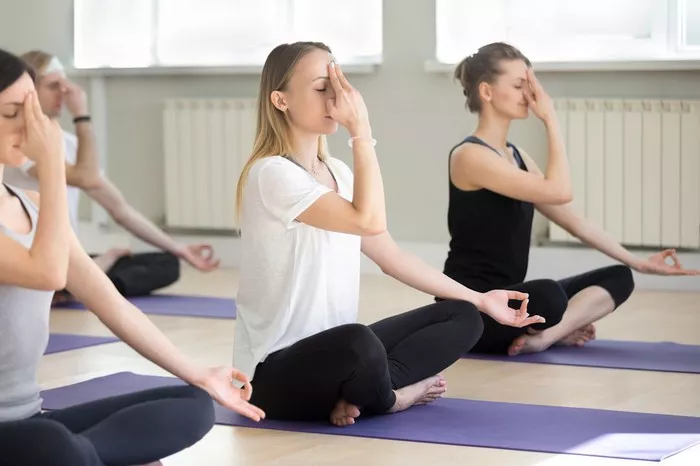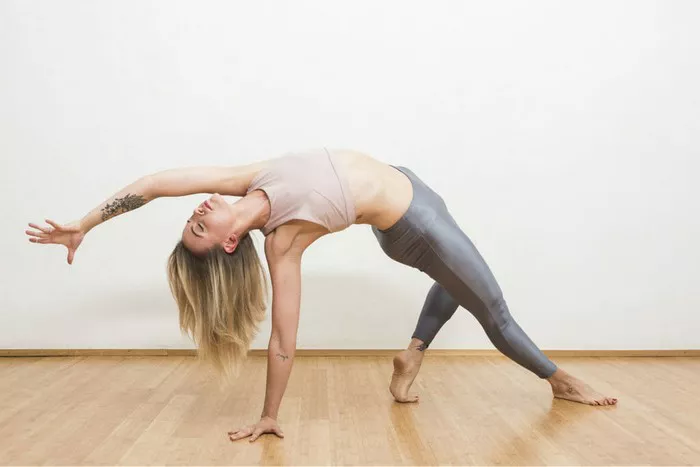Creating a yoga meditation room is a transformative project that combines the principles of mindfulness, interior design, and personal wellness. This dedicated space serves as a sanctuary for meditation, relaxation, and self-discovery. Whether you’re a seasoned yogi or a beginner, a well-designed meditation room can enhance your practice and provide a refuge from the daily grind. This guide will walk you through the essential steps to create a peaceful and inspiring yoga meditation room.
1. Selecting the Right Space
The first step in creating a yoga meditation room is choosing the right location. Ideally, this space should be quiet, free from distractions, and easily accessible. Consider the following when selecting your space:
Privacy: Choose a room or corner of your home where you can practice undisturbed. A spare bedroom, attic, or even a well-curated corner of your living room can work perfectly.
Natural Light: A room with natural light enhances the ambiance, making the space feel more open and inviting. Large windows or a skylight can provide a connection to the outdoors, further enhancing the meditative experience.
Ventilation: Proper airflow is essential for a comfortable and healthy environment. Ensure the room has good ventilation, either through windows or a ventilation system.
2. Setting the Foundation: Flooring and Walls
The foundation of your yoga meditation room includes the flooring and walls, which set the tone for the entire space.
Flooring: Choose a type of flooring that is both comfortable and practical. Hardwood floors with a non-slip yoga mat are a popular choice, providing a stable yet comfortable surface. Alternatively, cork or bamboo flooring can offer a softer feel while being eco-friendly.
Walls: The color and texture of your walls can significantly impact the room’s ambiance. Opt for calming, neutral tones like soft blues, greens, or earthy hues. Avoid bright, stimulating colors that might distract from your practice. Adding a textured wall with natural materials, such as wood or stone, can also enhance the room’s aesthetic.
3. Furnishings: Balancing Functionality and Comfort
When furnishing your yoga meditation room, focus on simplicity, functionality, and comfort. Overcrowding the space can be counterproductive to achieving a serene environment.
Yoga Mat: The yoga mat is the centerpiece of your practice space. Choose one that provides adequate cushioning and grip.
Meditation Cushion: A comfortable meditation cushion (zafu) or bench is essential for prolonged meditation sessions. Ensure it supports good posture and aligns with your body’s needs.
Storage Solutions: Incorporate minimalist storage solutions to keep the space tidy. Shelves or baskets can store yoga props, such as blocks, straps, and blankets, as well as other essentials like incense, candles, and books.
Seating: If space allows, add a comfortable chair or a small sofa for relaxation or reading. This can also serve as an additional spot for meditation.
4. Enhancing Ambiance with Lighting and Décor
Lighting and décor play crucial roles in creating a soothing atmosphere in your yoga meditation room.
Lighting: Use soft, adjustable lighting to create a warm and inviting ambiance. Dimmer switches allow you to control the intensity of the light. Incorporate natural elements like salt lamps or candles for a gentle, calming glow.
Décor: Decorate the room with items that inspire tranquility and positivity. Consider adding houseplants to improve air quality and bring a touch of nature indoors. Wall art featuring serene landscapes, mandalas, or spiritual symbols can also enhance the room’s aesthetic. Keep decorations minimal to avoid visual clutter.
5. Incorporating Elements of Nature
Connecting with nature is a fundamental aspect of both yoga and meditation. Incorporate natural elements to create a harmonious and peaceful environment.
Plants: Indoor plants like peace lilies, snake plants, or succulents can purify the air and add a sense of calm. Choose low-maintenance plants that thrive indoors and require minimal care.
Natural Materials: Use natural materials such as wood, stone, and bamboo in your furnishings and décor. These materials not only look beautiful but also promote a sense of grounding and connection to the earth.
Water Features: A small indoor fountain or water feature can introduce soothing sounds and enhance the meditative atmosphere. The sound of flowing water can help mask external noises and foster a sense of tranquility.
6. Sound and Silence: Creating an Acoustic Sanctuary
Sound plays a vital role in creating a conducive environment for yoga and meditation. The right acoustic elements can enhance your practice by promoting focus and relaxation.
Soundproofing: If possible, soundproof the room to block out external noise. Thick curtains, rugs, and acoustic panels can help absorb sound and create a quieter space.
Music and Nature Sounds: Consider incorporating a sound system to play calming music, nature sounds, or guided meditations. Ensure the system is easy to control and fits seamlessly into the room’s design.
Silence: Sometimes, the best sound for meditation is silence. Ensure the room can be a haven of silence when needed, free from the distractions of daily life.
7. Personalizing Your Space
Personalizing your yoga meditation room can make it feel more inviting and aligned with your unique preferences and practice.
Sacred Objects: Incorporate items that hold personal significance or spiritual meaning. This could include statues, crystals, or other sacred objects that inspire you.
Vision Board: Create a vision board with images, quotes, and affirmations that resonate with your intentions and goals. Place it somewhere you can see it regularly to keep your practice focused and inspired.
Journal Space: Include a small table or desk for journaling. Writing before or after your practice can help you process thoughts and emotions, deepening your mindfulness journey.
8. Technology: Balancing Benefits and Distractions
While technology can enhance your practice, it’s essential to strike a balance to avoid distractions.
Meditation Apps: Utilize meditation apps that offer guided sessions, timers, and tracking to support your practice. Ensure the technology is unobtrusive and integrated seamlessly into your routine.
Device-Free Zone: Create a device-free zone within your meditation room. This helps to minimize distractions and fosters a sense of presence and mindfulness.
9. Regular Maintenance and Mindful Upkeep
Maintaining the serenity and functionality of your yoga meditation room requires regular attention and mindful upkeep.
Cleanliness: Keep the space clean and clutter-free. Regularly dust, vacuum, and clean your yoga mat and props.
Refreshing the Space: Periodically update the room’s décor and layout to keep it fresh and inspiring. Rotate plants, change wall art, or introduce new elements that resonate with your evolving practice.
Mindful Usage: Use the space mindfully and respect its purpose. Establish a routine that includes regular practice and moments of reflection within the room.
Conclusion
Creating a yoga meditation room is a rewarding endeavor that can significantly enhance your mindfulness practice and overall well-being. By thoughtfully selecting and designing the space, incorporating elements of nature, and personalizing it to reflect your unique journey, you can create a sanctuary that supports your physical, mental, and spiritual growth. Whether you seek a place for daily yoga sessions, meditation, or simply a quiet retreat from the world, your yoga meditation room can become a cherished haven of peace and tranquility.


















